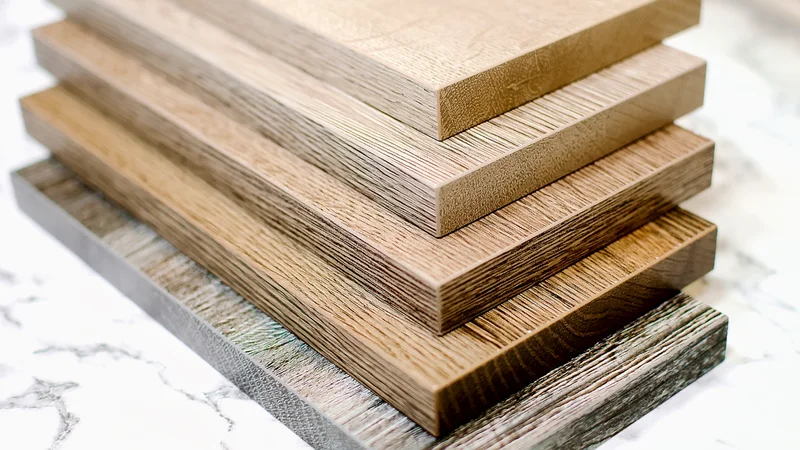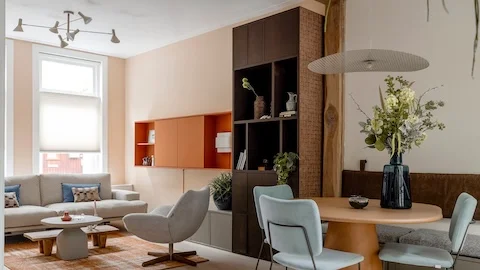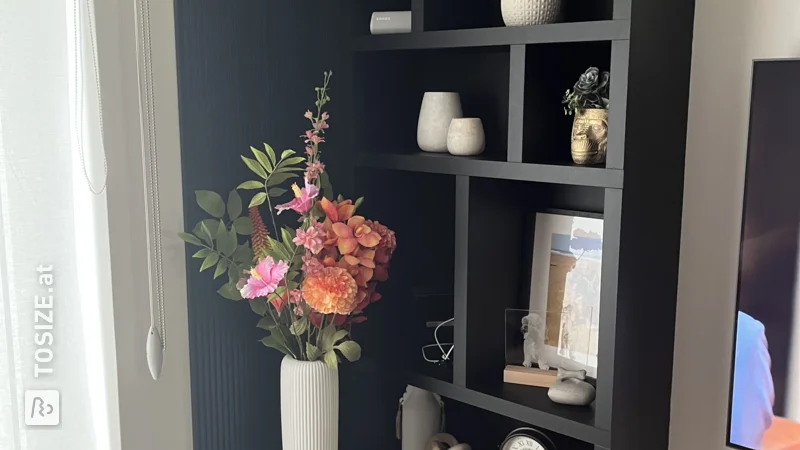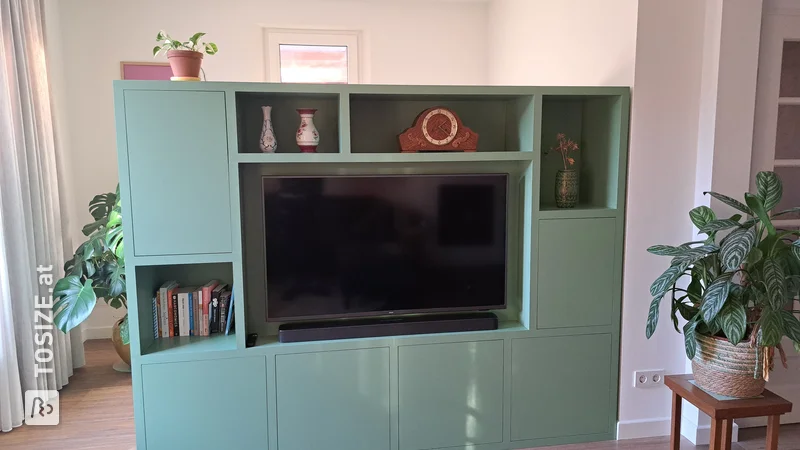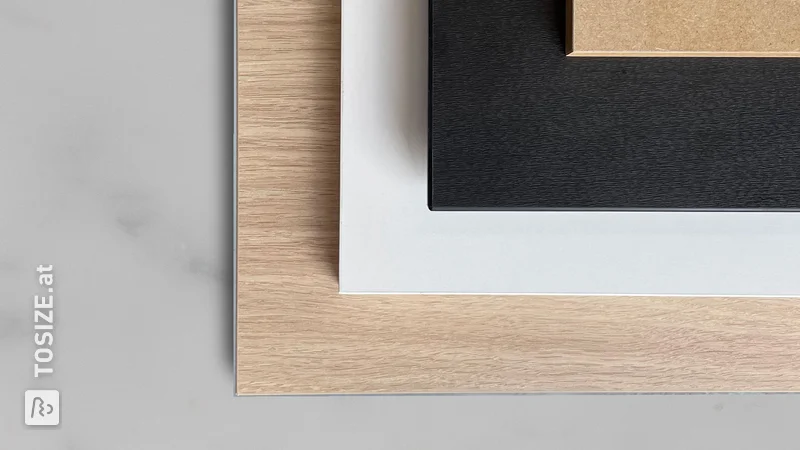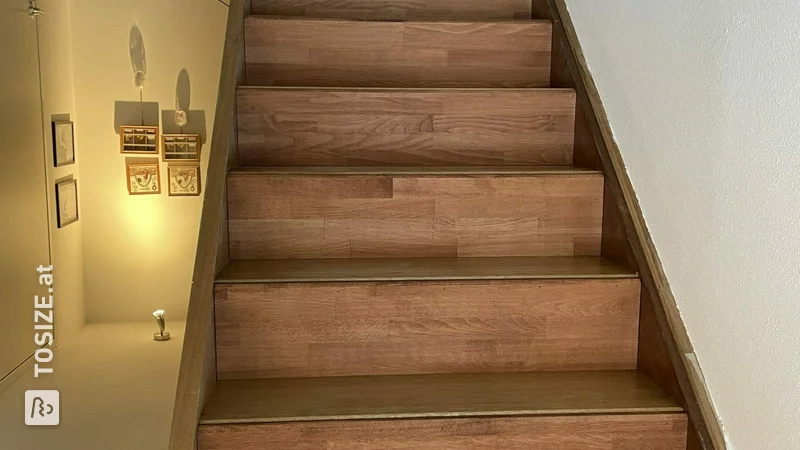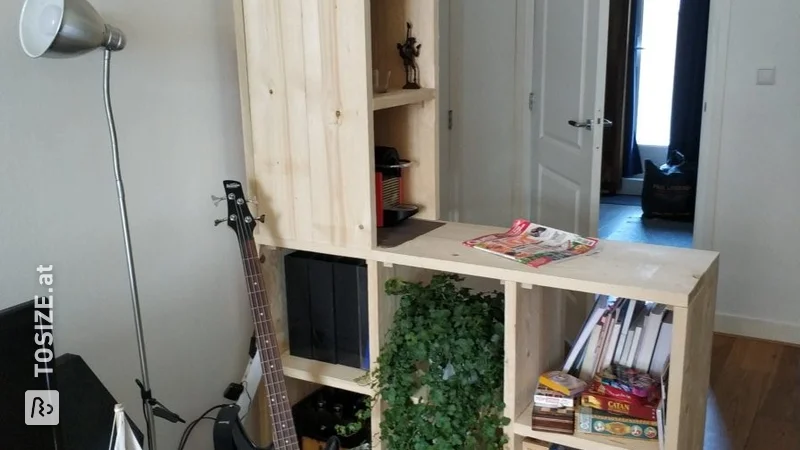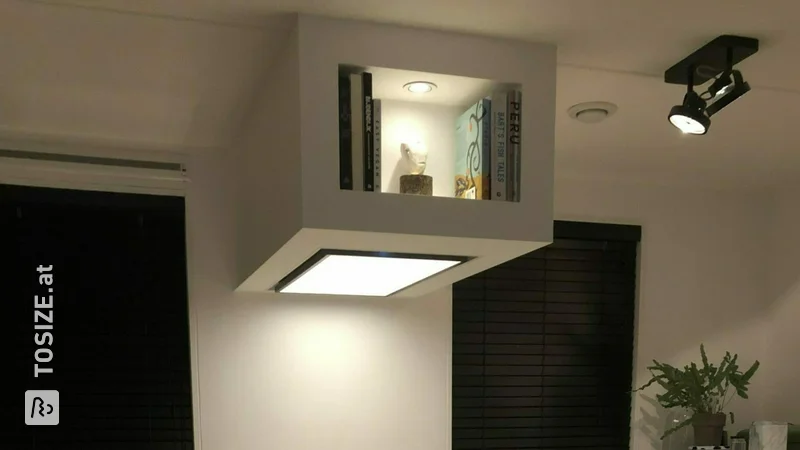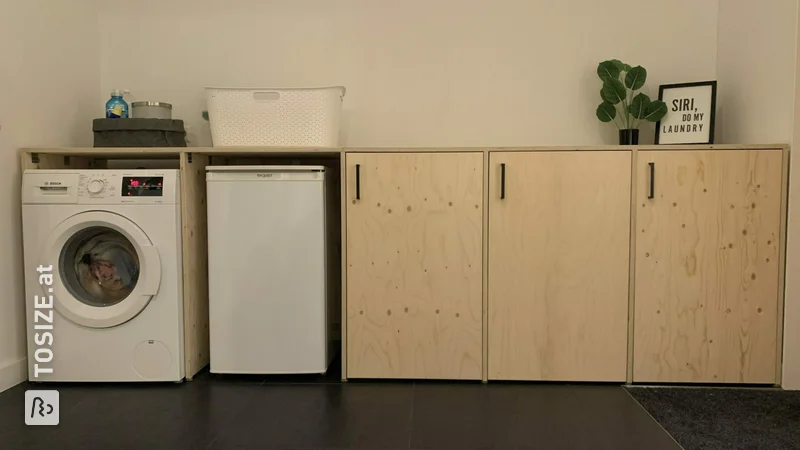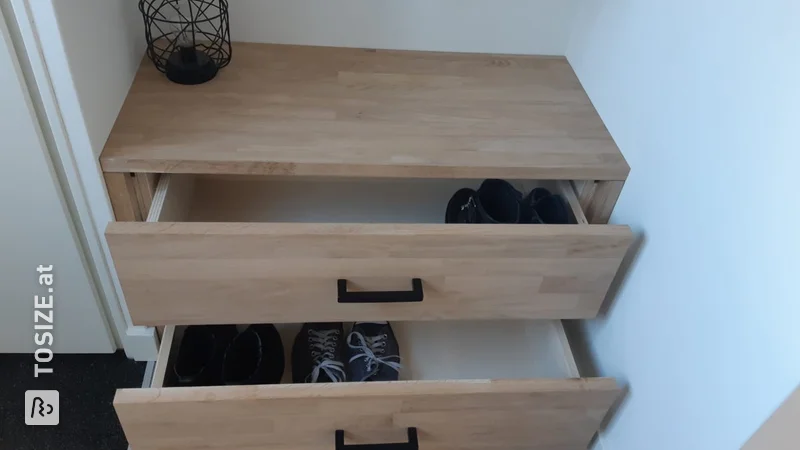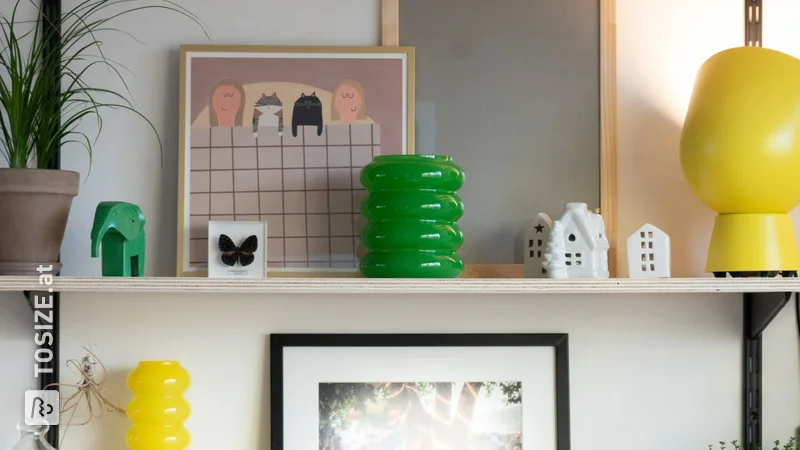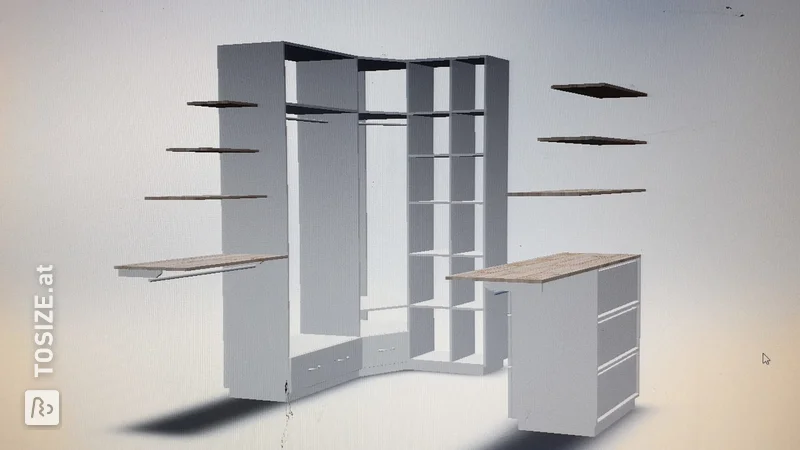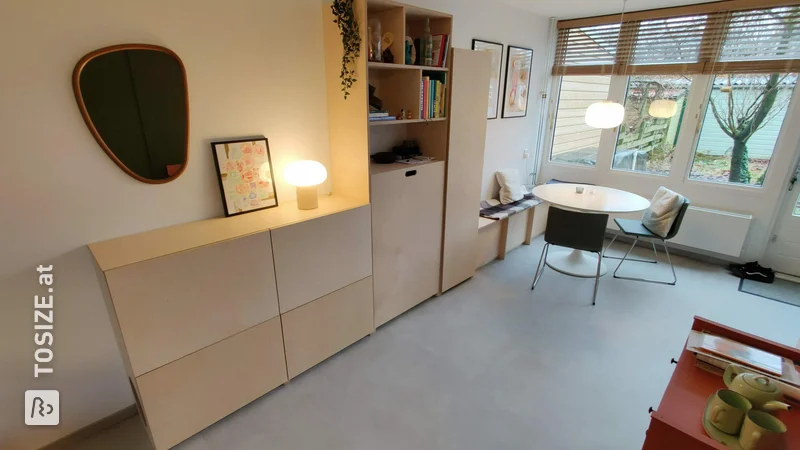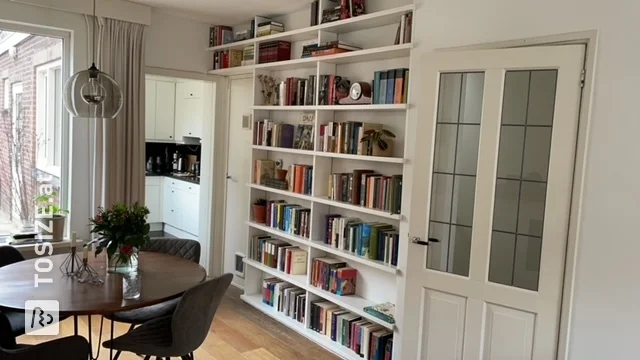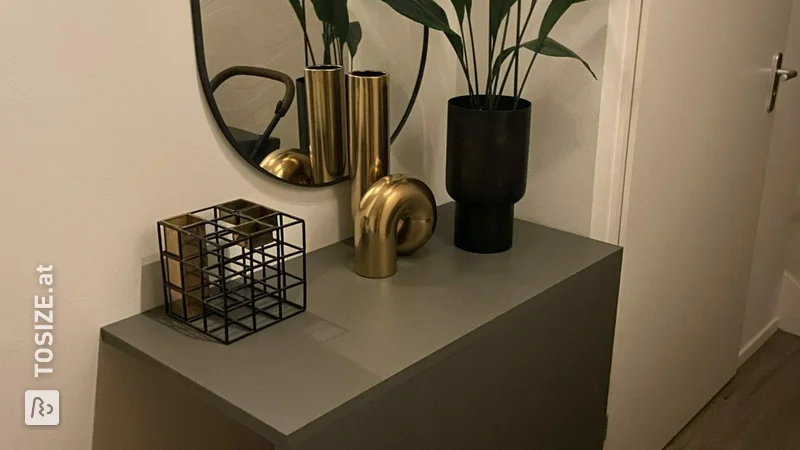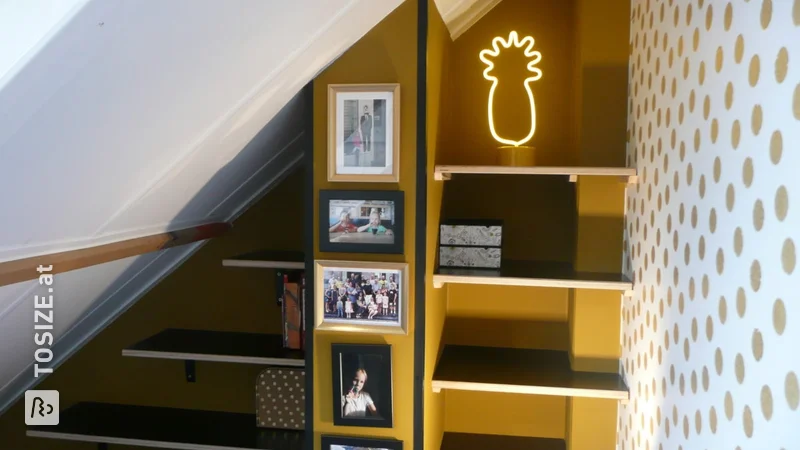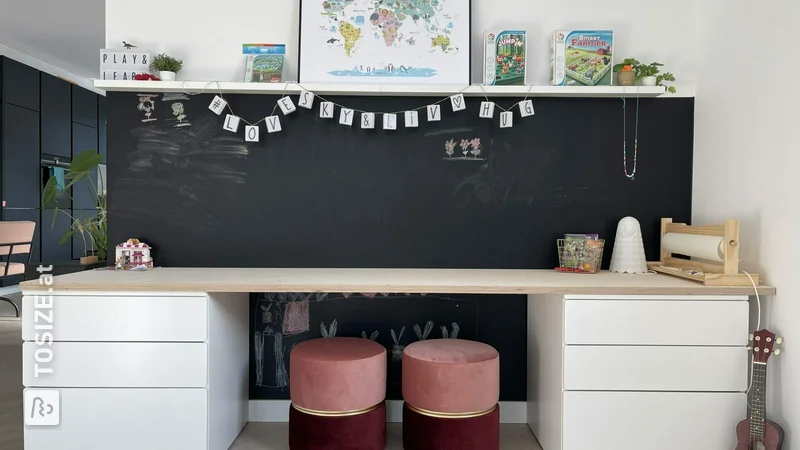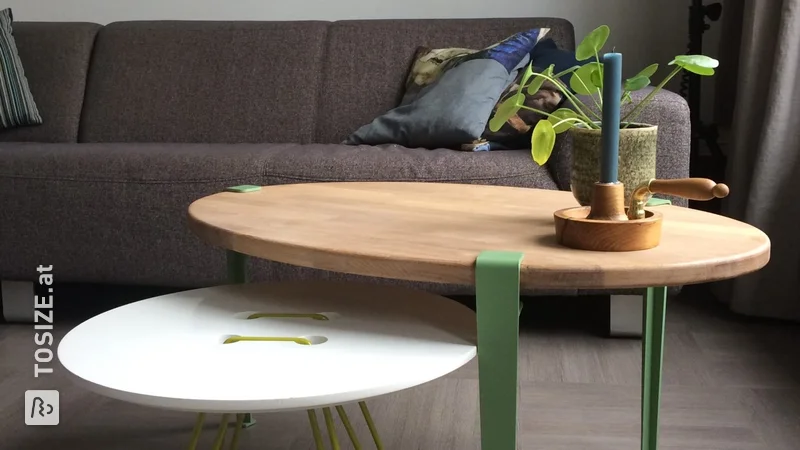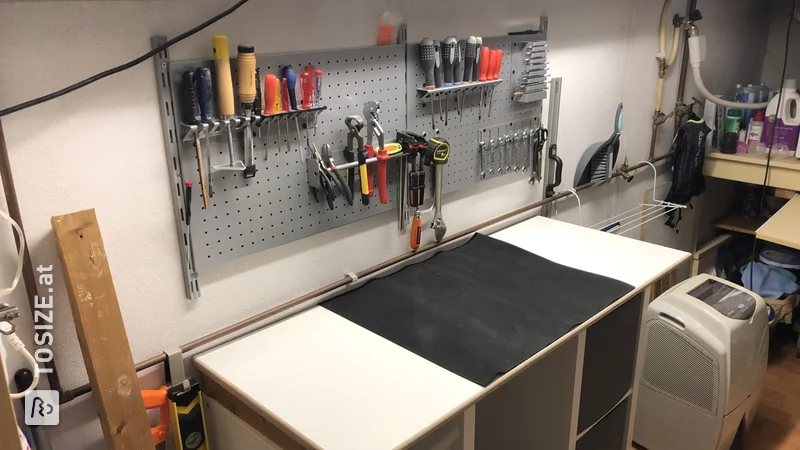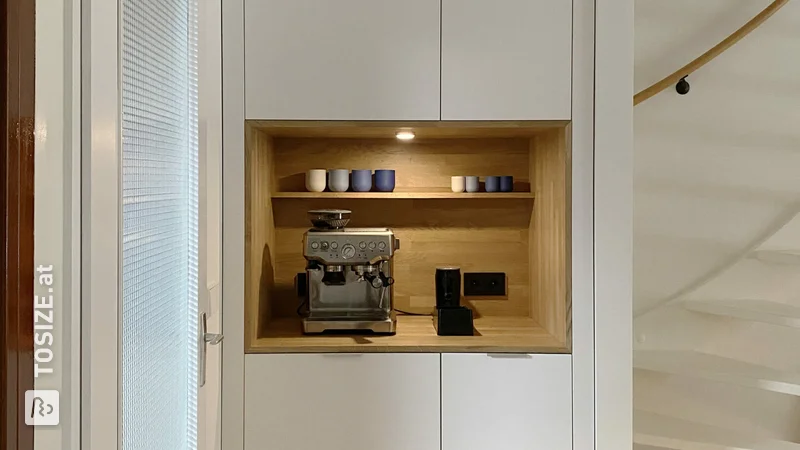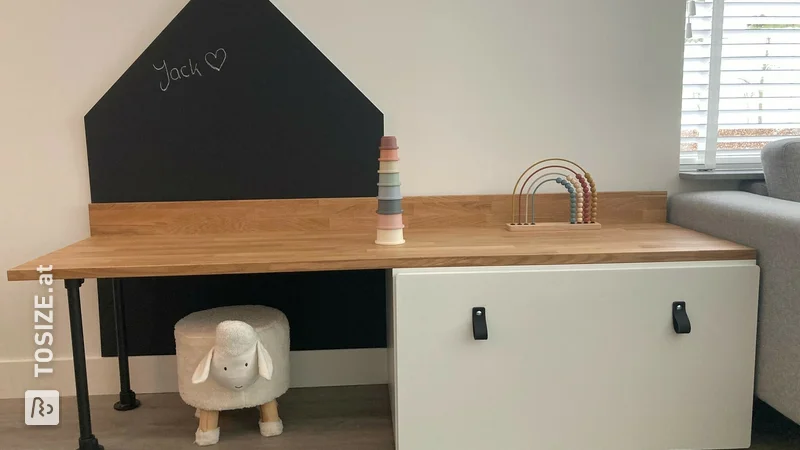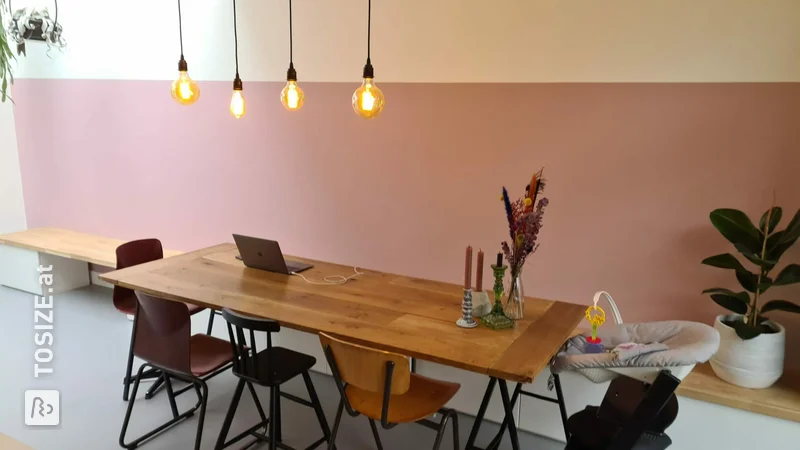Making your own cut-to-size cabinet
Making your own made-to-measure wardrobe is a fun challenge for any handyman! Whether it's a nice large wardrobe for your living room, a sleek bathroom cabinet or a trendy compartment cabinet: at TOSIZE.at we'd love to help you get started. Read how to make your own bespoke wardrobe in this article.
- How do you make your own cut-to-size cabinet?
- What items do you need to make a cabinet?
- How do you make a drawing or sketch of a cut-to-size cabinet?
- What parts does a cut-to-size cabinet have?
- How do you anchor a cabinet in the wall?
- How do you connect the sheet materials in your cabinet?
- What material do you use for a cut-to-size cabinet?
- Examples of cabinets made by our handymen
- Getting started with your own cut-to-size cabinet
How do you make your own cut-to-size cabinet?
Making your own cabinet requires some preparation. You will need certain tools. It is useful to make a working drawing and think carefully in advance about all the parts of your cut-to-size cabinet.
At TOSIZE.at, we provide perfectly cut-to-size sheet material. And we simply deliver it to your home. That saves you a lot of work, a mountain of waste and a lot of sawdust.
Do you already have an idea of what you want your cabinet to look like? Read on below to find out what you can do to make your own cabinet.
What items do you need to make a cabinet?
To make a cabinet, you will need a number of materials. Exactly what you need depends entirely on your project. The list below gives an overview of materials you might need:
- Graph paper, pencil, eraser, ruler: for the drawing of your cabinet
- Cordless drill: to easily pre-drill holes and drive screws into your material (tip: also use a depth stop or dowel drill set to limit the drilling depth)
- Wood glue and glue tongs: can be used as required to glue different boards together
- Dowels, corner joints or lamellas: depending on how you want to connect the different parts of your cabinet
- Lamello cutter: you will need this if you are using lamellos
- Primer, edge sealer, lacque: most timbers from TOSIZE.at have yet to be finished
- Sandpaper: always handy to have on hand, to smooth away unevenness or neatly sand your drill holes
- Tape measure or folding rule: to measure out your cabinet exactly and order the right size of sheet material from us
- Screws: to connect the various parts together
- Filler: can be used to neatly cover screw holes
- Spirit level: to build everything neatly straight
How do you make a drawing or sketch of a cut-to-size cabinet?
Before you start working on your cut-to-size cabinet, it's smart to think carefully about the design. How many shelves will your cabinet have? Will it have doors or drawers? Will it need a back panel? You also need to know the exact dimensions of all the board materials so that you can easily order them later from TOSIZE.at.
Tip: when ordering, you can mark each board with a characteristic of your choice. That way, once your wood is delivered to your home, you'll know exactly which board belongs where in your design.
So make a good drawing or sketch of your cabinet. You can do that with a digital programme, such as SketchUp or FreeCAD. But, sketching with a pencil, graph paper, ruler and eraser also works fine.
While sketching, also think about how you will connect different sheet materials. Will you use corner anchors, dowels or lamellas? We will go into this in more detail later in this article.
We can also mitre-cut the board material for you. Then you create invisible joints. See our finishing options for more information.
To see how your cabinet will fit in the room, tape the outside measurements of the cabinet to the wall. This will give you a good idea of the size of the cabinet and allow you to adjust your design if necessary.
Ultimately, it's about working out the sketch so that you know the exact measurements of all the materials needed. When doing so, also take into account the exterior and interior dimensions.
Are you making a built-in cupboard or wardrobe? Then remember that no house is completely straight. Measure in several places, between the ceiling and the floor, for example. This is essential for a built-in cupboard to avoid unpleasant surprises later on.
What parts does a cut-to-size cabinet have?
When building your own cabinet, you are usually not there with sheet material alone. You may have fitted your design with doors, drawers and other things that many cabinets can't do without.
Doors and drawers
When installing doors and drawers, it is important to pay close attention to the quality of the hinges and drawer guides. Research which hinges or drawer guides are most suitable for your design.
If you include drawers in your design, the drawer runners you will use are leading for the inner size of the drawer. Find that out well in advance.
Furniture fittings
The furniture hardware you choose can be quite decisive for the final look of the cabinet. Consider what hardware you need and how it will have a place in the design.
Adjustable feet
If the floor in your house is not completely straight, you can put the cabinet on leveling feet. This way, you can still easily level your cabinet.
Rear panel
Want to put a backboard in your cabinet? Then choose a thin material, such as hardboard. You attach this with small screws, for example.
Shelves
Shelves are found in most cabinets. To attach these, first determine the location of the drill holes to fix the shelf supports. Make sure not to drill through the shelf by screwing a stopper onto the drill bit. If you don't have a depth stop, you can also use a piece of tape to cover the drill bit. That way you can see exactly how far you can drill.
How do you anchor a cabinet in the wall?
If you make a tall cabinet, it is wise to anchor the cabinet to the wall. This will prevent the cabinet from falling over. This is certainly advisable if you have small children in the house who may try to climb into the cabinet.
You can easily anchor the cabinet to the wall by securing it with a screw. Make sure you use a suitable wall plug and, if necessary, place a wide washer under the head of the screw so that it does not pull through the wood.
You can also use impact plugs or wedge bolts for anchoring. Remember that it is best to anchor a wide cabinet at several points.
How do you connect the sheet materials in your cabinet?
You can connect the different shelves and sheet materials of your cut-to-size cabinet in different ways.
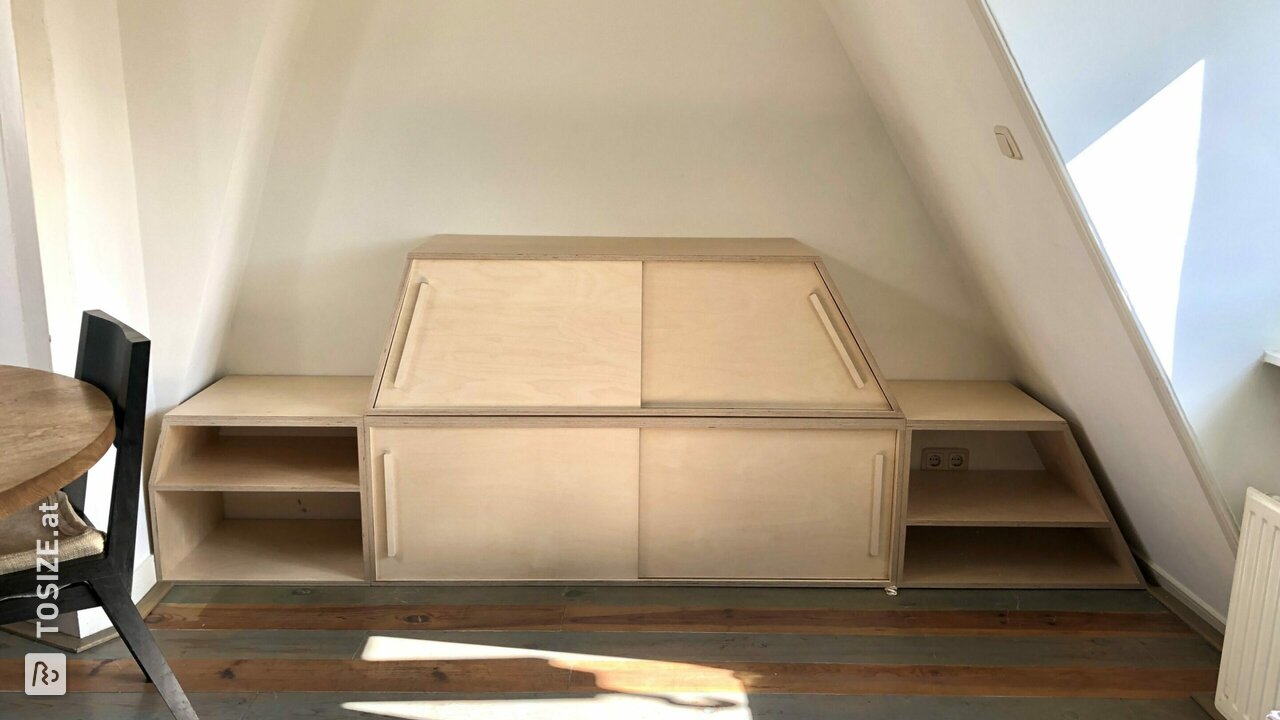
Screws
The most obvious way is to attach the different materials together with screws. However, it is neat to finish the screw holes with putty afterwards. If desired, you can reinforce the screw connections with one of the methods below.
Corner joints
This is the simplest, but perhaps also the least beautiful way to assemble your cabinet. With corner joints, you screw the different shelves firmly together.
Dowels
Using dowels, you can glue the different parts of the cabinet firmly together. Make sure you have good equipment, such as a dowel drill set, and mark the drill holes carefully. Connect the dowels to the boards with a little wood glue.
Lamellos
By using lamello, you have a larger gluing surface and therefore a slightly firmer joint than with dowels. You do need a special milling machine for this. Our handyman Roelof used lamello for his bedroom cabinet.
What material do you use for a cut-to-size cabinet?
Which material you use for your homemade cabinet depends entirely on your taste and personal requirements. Many types of material are suitable. Think of MDF, plywood, plywood, OSB, Phenolic Plywood, underlayment, furniture panels, chipboard, carpentry panels or HPL.
Below, we explain some of the materials that are commonly used by our handymen to make cabinets.
Plywood
Plywood panels are versatile and strong. Ideal for making cabinets and also available in different variants. Plywood panels have a natural look, just like solid wood. The most commonly used variant is plywood birch. But, you can also choose a variant with topfix layer.
Timber Board
Timberboards are ideally suited for making your own cabinet. Carpentry panels are furniture panels made of solid wood. This makes them robust and of high quality. Among our handymen, we see the use of oak panels, spruce panels and pine panels a lot. All joinery panels have a natural appearance.
MDF
MDF is just about the all-rounder in our range. MDF boards are one of the most popular and versatile types of board material. It can be used for countless projects because this board material is available in so many different variants. The material is easy to work with and does not splinter.
Examples of cabinets made by our handymen
Need inspiration for your own cut-to-size cabinet? Our handymen went before you and shared their projects with us. Some of the highlights can be found here.
Sleek plywood seating units
Koen had a good number of plywood birch boards, cut-to-size precisely, delivered to his home by TOSIZE.at. He lightly sanded the boards, varnished them and joined them together with glue and dowel joints to make a sitting cabinet. The use of Skylt lacquer makes it look like the wood is untreated. A beautiful result!
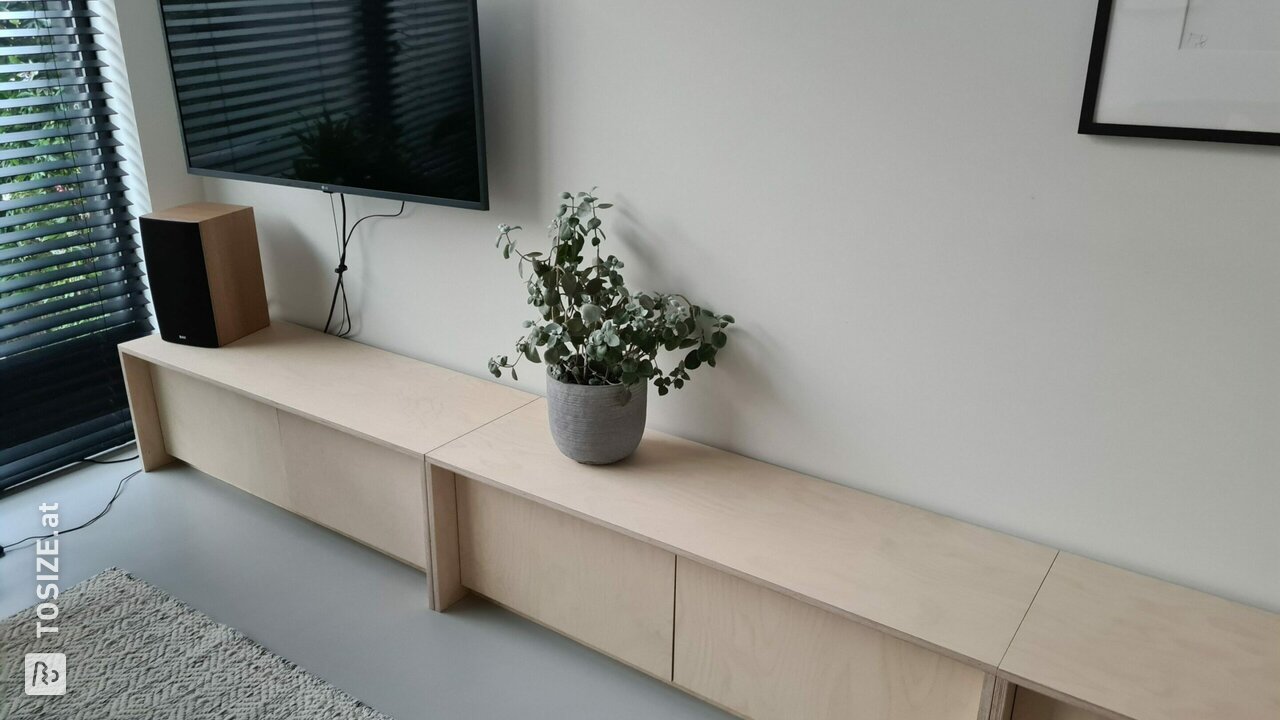
Bathroom furniture made of moisture-resistant MDF
In a wet room, it is best to use water-resistant MDF. That is exactly what Peter did for his bathroom cabinet. He had his bathroom cabinet painted in silk gloss for a clean result.
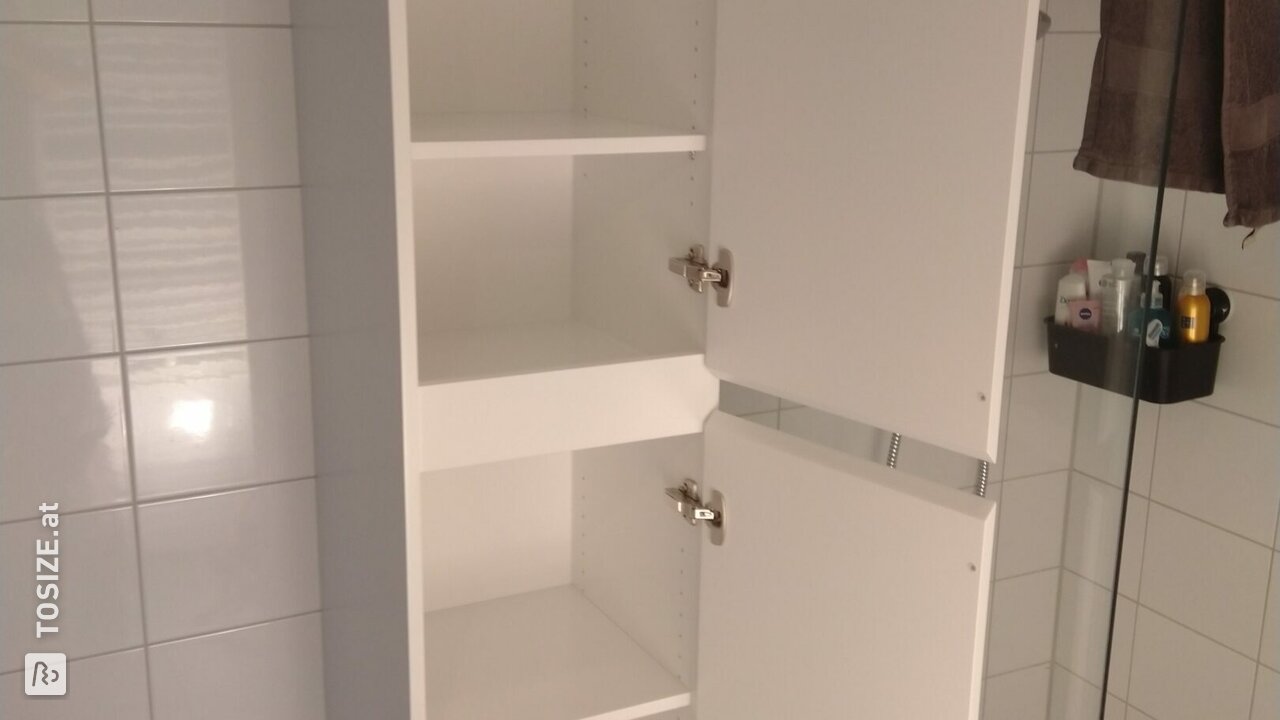
Built-in cupboard made of MDF with paint film
Asabi made a built-in cupboard from MDF with lacquer carrier film. This saved him from having to prime the MDF himself. Thanks to the adjustable feet under the cabinet, the whole unit is perfectly level.
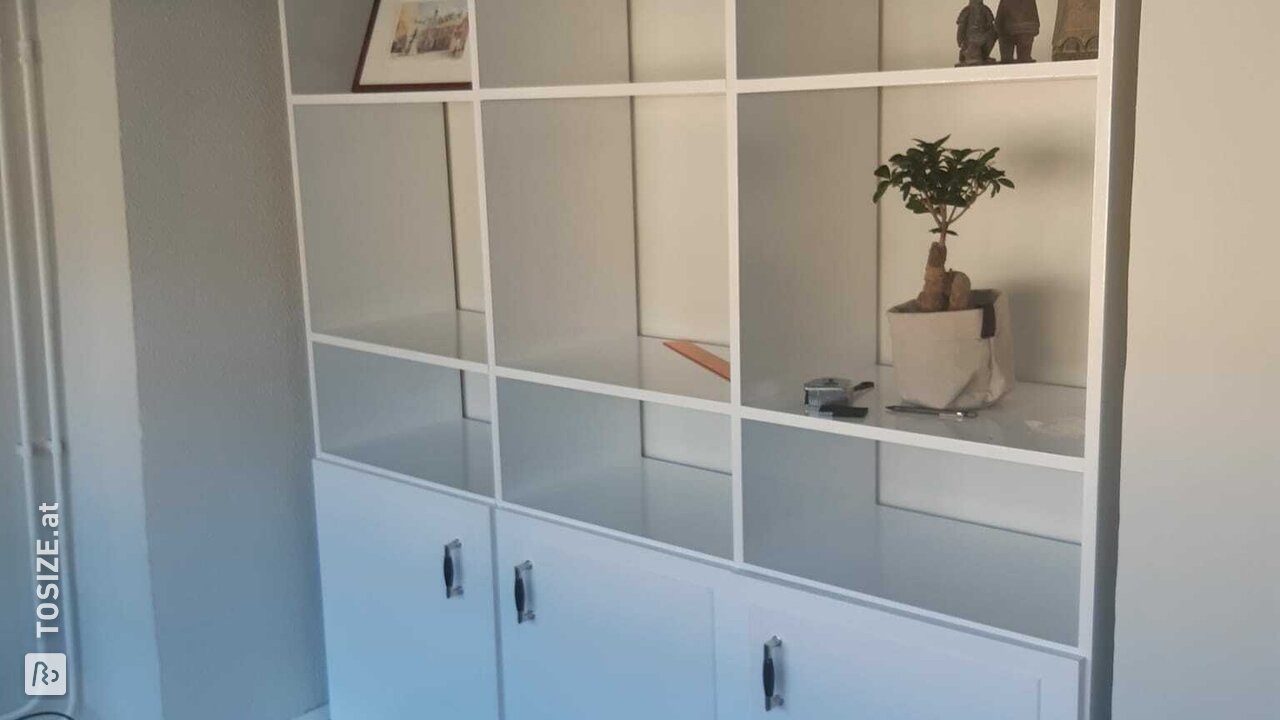
Large oak joinery cabinet
A bookcase with room for four violins and a removable part to put a mirror in. Jan Willem thought it would be a nice project. He ordered a good number of perfectly cut-to-size oak lumber panels from TOSIZE.at and turned them into a beautiful cabinet.
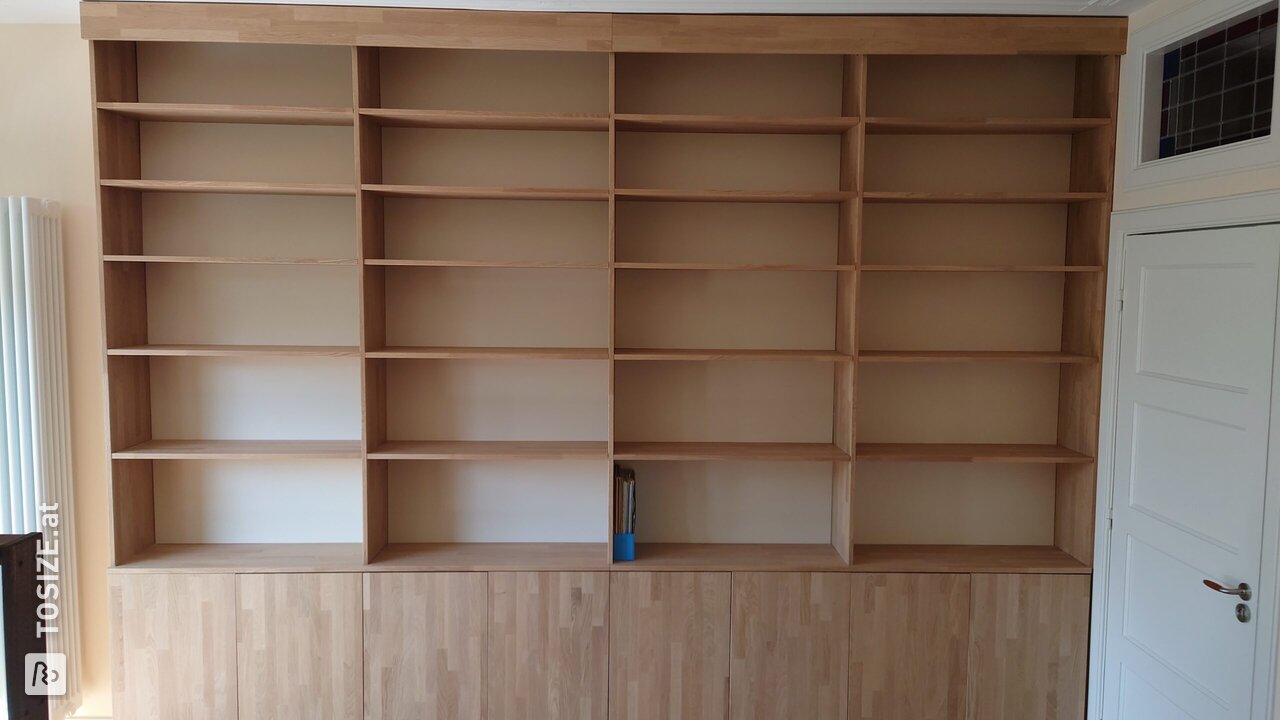
Plywood bedroom wardrobe
A creative cabinet, including drawers, was made by Roelof. He used plywood and a top made of iroko.
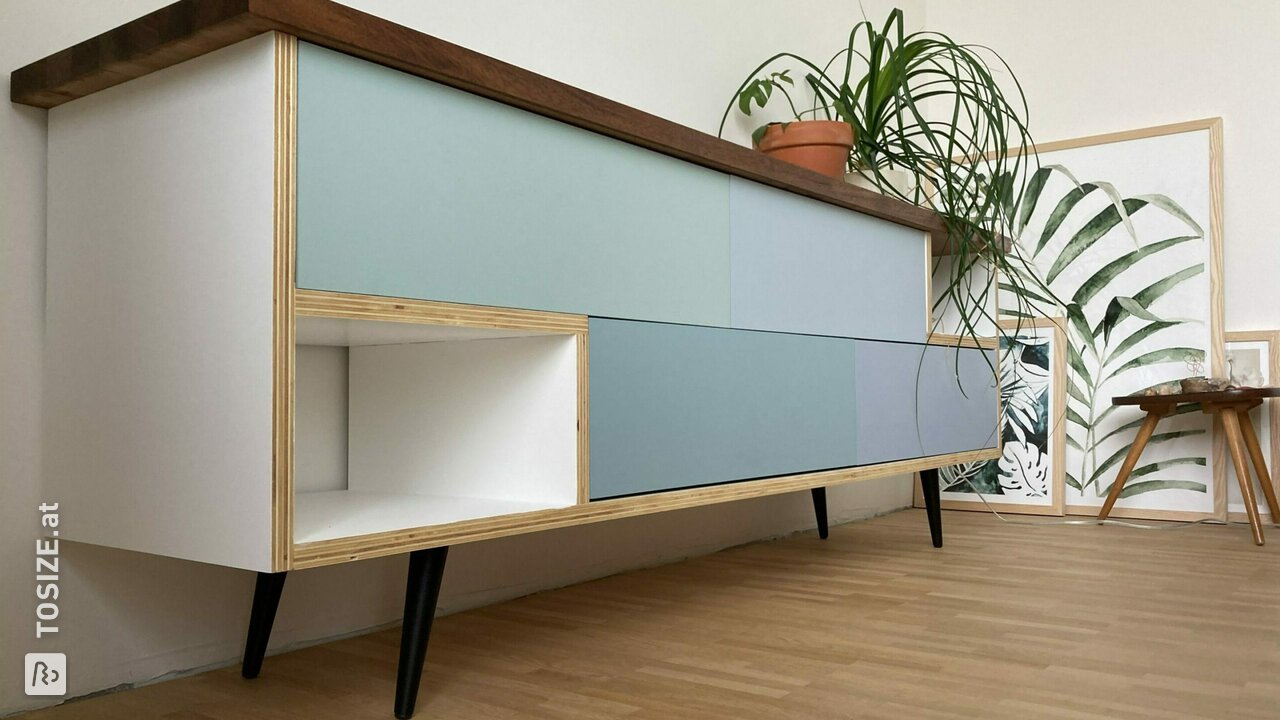
Laura wanted a compartmentalised cabinet for her best stuff. She glued some MDF shelves together and the result is great. She even finished off the edges and seams nicely!
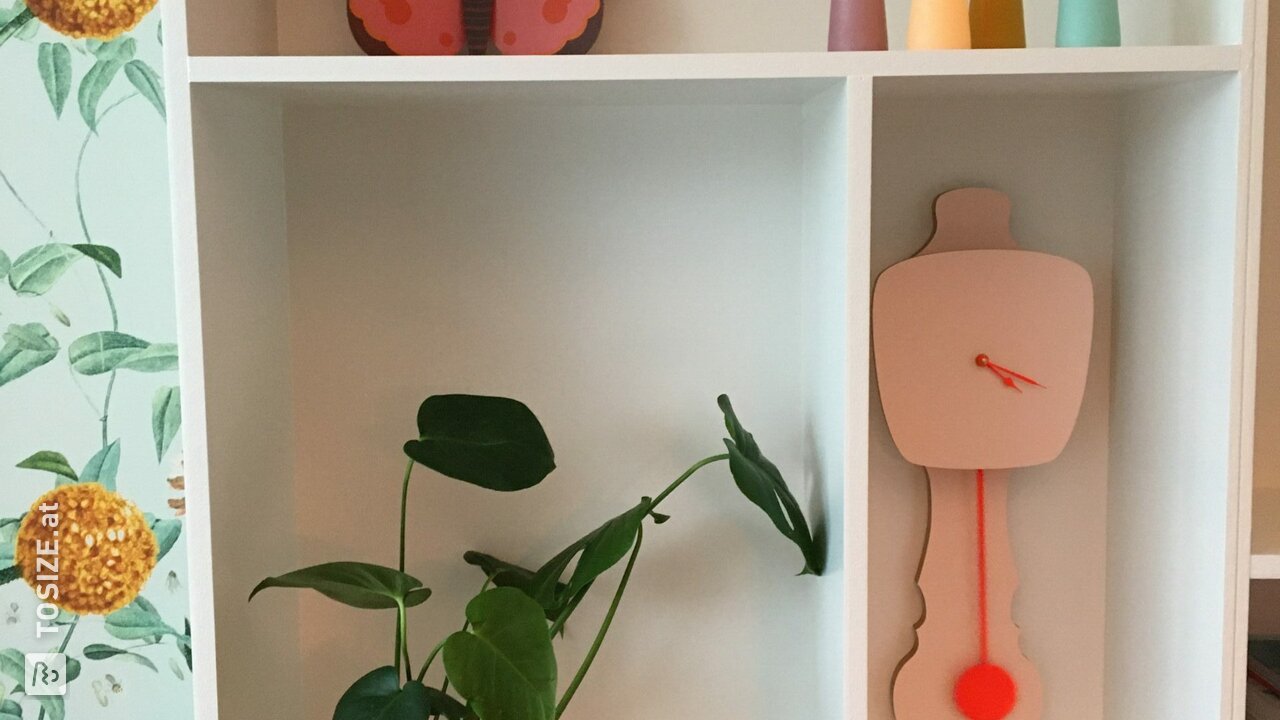
Cheap dense storage cabinet
Of course, you can make a cabinet as expensive as you want. Paulien went for an affordable cabinet in the guest room.

Getting started with your own cut-to-size cabinet
With the tips in this article, you can get started with your own cut-to-size cabinet. Of course, we are happy to help you get started with precisely cut-to-size sheet material. Check out our DIY projects for inspiration or browse our Assortment at your leisure.
Has your project been completed and are you proud of it? Then we would love to receive photos of your cut-to-size cabinet, so you too can inspire other handymen with your project!
